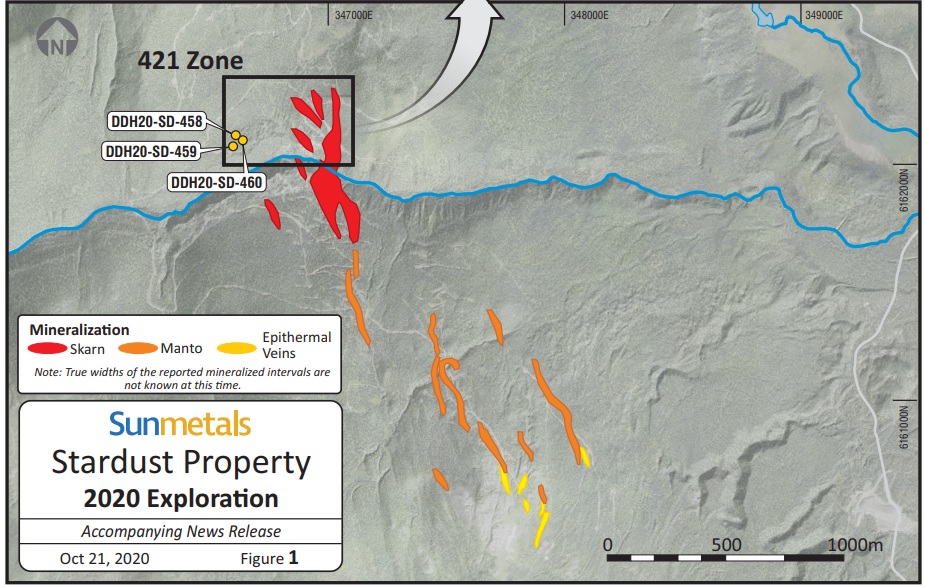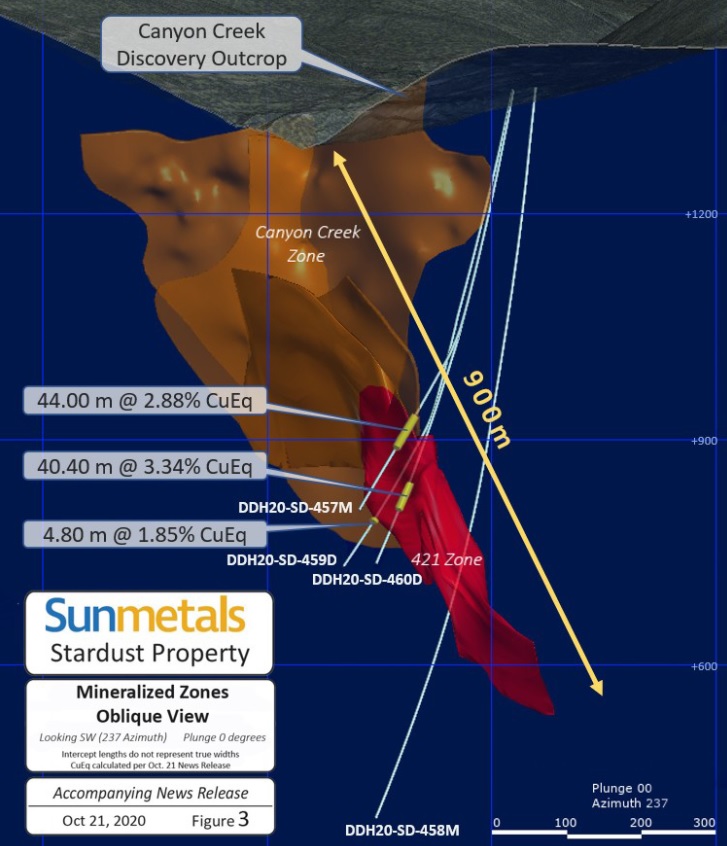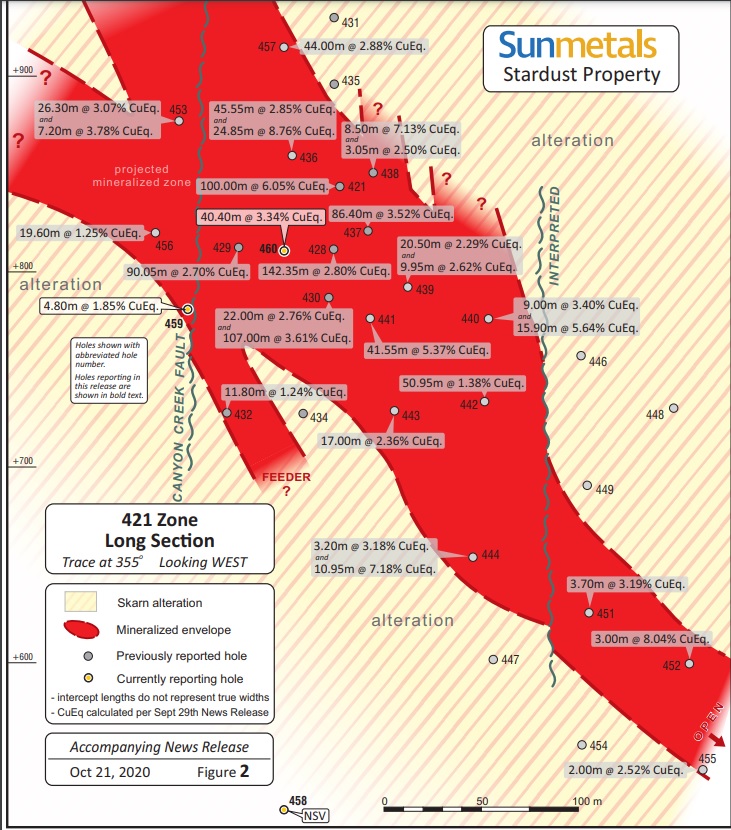
Sun Metals (SUNM.V) has released the assay results from an additional three holes that were drilled as part of the 2020 summer drill program on the Stardust CRD deposit in British Columbia. Two of the three holes did not yield any eye-catching results although we would like to mention hole 459 which encountered 4.8 meters of 0.92% copper, 0.81 g/t gold and 16.2 g/t silver from a depth of 675 meters down-hole. Hole 458 did encounter strong alteration but did not encounter any noticeable mineralization.

Hole 460 was the real eye-catcher with the headline result of 40.40 meters (true width unknown) containing 3.34% copper-equivalent (consisting of 1.74% copper, 1.41 g/t gold and almost 27 g/t silver) including an interval of 16 meters of 6.02% CuEq. An excellent result which confirms the continuity of the high-grade mineralization below hole 421 which encountered 100 meters of 6.05% copper-equivalent.
Perhaps hole 460 could be considered low-hanging fruit given the proximity to hole 421, but confirming the continuity in this CRD system is key, as that’s the best (and only) way to build tonnage. Hole 460 strengthens the thesis the mineralization appears to be extending for about 900 meters of plunge length starting at surface, where Peter Megaw discovered the Canyon Creek outcrop about 20 years ago.

Sun Metals has now confirmed its exploration model and the current focus will be on expanding the mineralized system until the company’s management feels it has built a sufficient tonnage to justify a resource calculation and perhaps, in a later step, complete a preliminary economic assessment.
We had a quick chat with CEO Steve Robertson to discuss these exploration results, and we will very likely do a deeper dive into the story soon.
Hole 460 is obviously excellent. Location of that hole (relatively deep is also good), but how should we see this vis-a-vis the weaker mineralization in hole 459?
Hole 460 was an undercut of hole 457 and we expected the intercept to be deeper, but the mineralization occurred further to the west and therefore plots a little higher in the hole and on the long section. Hole 459 was designed to test the lower edge of the known mineralization. When doing this sort of thing, sometimes you get a pleasant surprise like we had in hole 457. In that case, we thought we were testing the upper edge of the mineralization and ended up tapping into the heart of a vertical feeder leading up into the Canyon Creek zone. In the case of 459 however, we simply found the lower edge and got some weaker mineralization.

On the long section (above) it looks like 459 encountered the mineralization right at the canyon creek fault, does that indicate the higher-grade mineralization could have shifted a little bit?
There is definitely displacement across the Canyon Creek fault but it’s a very complex area of mineralization and requires more work.
Hole 458 is perhaps a bit more disappointing. So although you hit the zone you wanted to hit, the mineralization was very weak. What would be a possible explanation for this?
Hole 458 was a higher risk drill hole. It was intended to test deep below the 421 zone. Although we didn’t intercept any high-grade we did find a massive amount of alteration in the drill core, and weak mineralization (less that 0.5% Cu) was peppered throughout that altered rock. In other words, we observed the hydrothermal system in place well below 421, we just didn’t tap into high-grade mineralization. Lots more potential at depth in this area and the results from 458 are actually encouraging!
We shouldn’t write off deeper mineralization based on one hole, but what would be your next approach to figure out mineralization at depth?
We need to sit down as a team with all of the data once the program results are all in hand and figure out if another test in that area is in our future. I think it’s still a pretty juicy looking target.
Disclosure: The author has a long position in Sun Metals.

